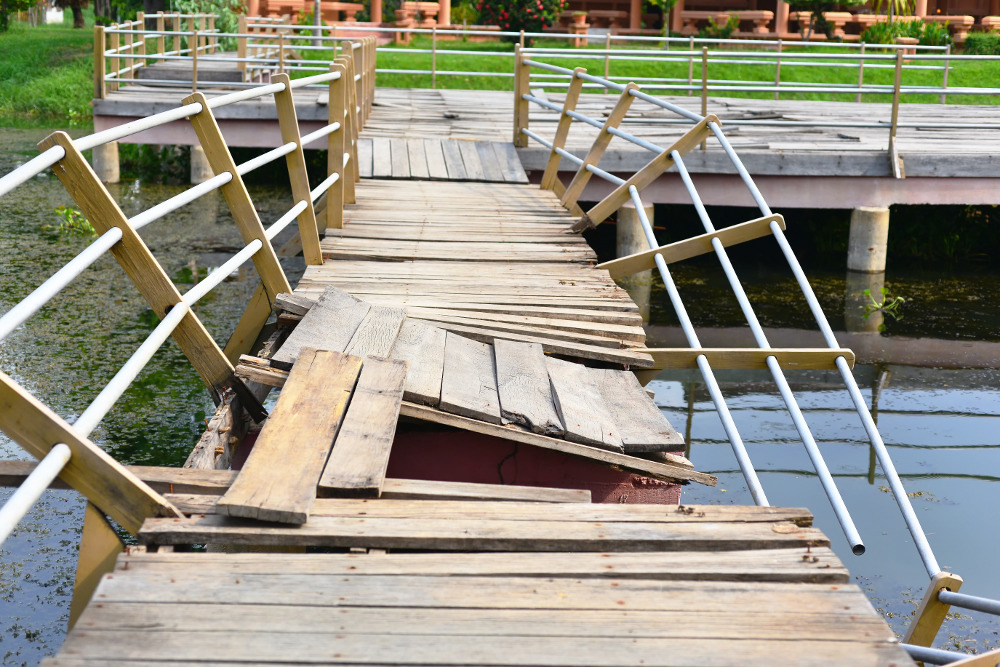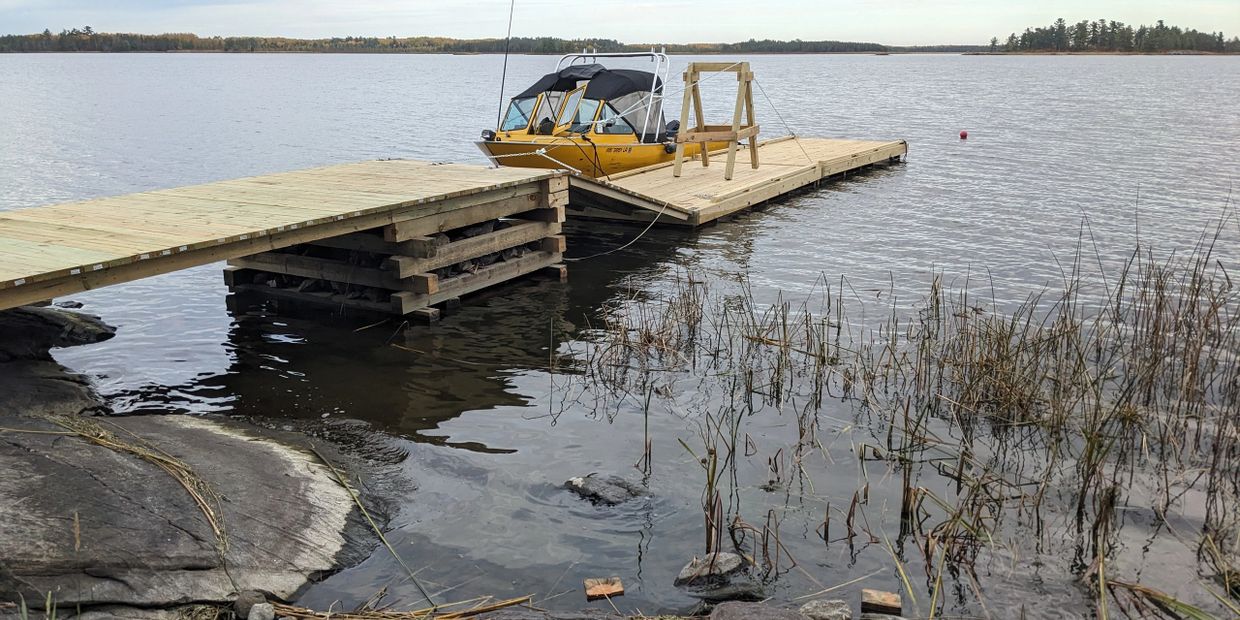Top Indicators You Need Professional Dock Repairs This Period
Effective Dock Fixing Techniques: Making Certain Structural Honesty
Ensuring the structural integrity of docks with effective fixing methods is critical for the long life and safety and security of aquatic centers. This entails a multi-faceted technique beginning with comprehensive examinations using sophisticated modern technologies like sonar tools and remotely ran cars (ROVs) to detect both noticeable and concealed problems. Ultimately, choosing the right repair work materials, such as composite products and corrosion-resistant alloys, is important for resilience. Architectural support methods, including the application of cross-bracing systems and load-distribution plates, play an essential function in mitigating stress factors. The value of these methods ends up being noticeable when checking out sophisticated repair techniques and preventative upkeep strategies.
Evaluating Dock Damage
Examining dock damage is a crucial primary step in guaranteeing the structural honesty and security of any kind of docking center. This preliminary analysis involves a detailed inspection to determine both surprise and noticeable problems. Secret elements to take a look at consist of the dock's foundation, pilings, outdoor decking, and hardware. Each part needs to be scrutinized for indications of wear, rot, corrosion, or various other kinds of degradation that might compromise the structural honesty.
Architectural engineers or qualified assessors generally execute these evaluations utilizing specialized devices and strategies. Undersea evaluations could employ sonar tools or remotely ran vehicles (ROVs) to discover submerged damages. Over water, aesthetic inspections are complemented by making use of moisture meters and various other diagnostic tools to uncover underlying concerns not right away noticeable to the nude eye.

Deciding On Repair Service Materials
Selecting the appropriate repair products is a crucial step in the dock repair procedure, one that directly influences the durability and performance of the fixed structure. Material selection should be driven by factors such as environmental conditions, load-bearing requirements, and compatibility with existing dock elements. Timber is a typical option for docks due to its all-natural durability and visual allure. Selecting the right type of wood, such as pressure-treated lumber or naturally rot-resistant species like cedar or teak, is critical to hold up against water settings.
Along with wood, composite products are increasingly preferred as a result of their durability and reduced upkeep requirements. Composites, generally made from a blend of plastic and timber fibers, provide outstanding resistance to rot, bugs, and UV damages. For steel anchors, choosing corrosion-resistant alloys such as galvanized steel or marine-grade light weight aluminum is crucial to avoid rust and ensure structural stability in saline water conditions.
Epoxy resins and marine-grade sealers are indispensable for fixing fractures and securing joints, providing a waterproof obstacle and enhancing the dock's overall strength. By carefully selecting top notch materials, dock fixings can accomplish resilient outcomes, thus protecting versus future degradation and making sure secure, trusted use.
Structural Support Techniques
Efficient structural reinforcement techniques are essential in ensuring the stability and durability of dock repair work. One basic approach includes using steel or composite support bars (rebar) within concrete frameworks. Rebar offers extra tensile toughness, stopping fractures and distributing tons extra uniformly. This technique is especially effective for docks revealed to hefty loads or harsh environmental problems.
An additional crucial strategy is the application of fiber-reinforced polymers (FRP) These products offer high strength-to-weight proportions and outstanding resistance to corrosion, making them suitable for enhancing wood or concrete docks. FRP can be used in sheets or strips and adhered with epoxy materials to boost structural stability.
Bracing and securing systems also play a crucial function in architectural reinforcement. Cross-bracing, using metal or wooden beams, can counteract side pressures, reducing swaying and activity. Anchoring systems, such as helical piers or driven stacks, provide a secure structure by transferring lots to deeper, more stable dirt layers.
Finally, the assimilation of load-distribution plates can help disperse weight a lot more equally throughout pop over to these guys the dock's surface area, minimizing local stress and anxiety points. These methods collectively guarantee that docks remain robust and secure, with the ability of withstanding the rigors of their functional environment.
Advanced Repair Work Techniques

One more advanced strategy involves underwater welding, which permits repair work to be conducted without the demand to dewater the location. This approach is particularly useful for addressing structural problems in submerged dock components, making sure marginal interruption to procedures. Boosted welding strategies, combined with robotic systems, provide precision and reliability, thus extending the life expectancy of the dock.
Additionally, cathodic protection systems are executed to avoid deterioration in metal dock structures. By making use of sacrificial anodes or satisfied current systems, these strategies efficiently mitigate the electrochemical processes that cause product damage.
Lastly, advanced monitoring technologies, such as architectural health surveillance (SHM) systems, provide real-time data on the condition of dock frameworks. These systems make it possible for proactive maintenance and timely treatments, ultimately this content ensuring the lasting architectural integrity of the dock.
Upkeep and Prevention
Maintenance and prevention are essential ideas that underpin the longevity and safety of dock frameworks. Regular assessments are paramount, permitting early detection of damage, possible weaknesses, and ecological influences. An aggressive technique, including regular checks for rust, rot, and structural changes, mitigates costly repair work and prolongs the dock's functional life.
Safety nets ought to include using protective coverings to steel parts to defend against rust and using treated wood to withstand decay. Additionally, making certain appropriate water drainage and ventilation can protect against water build-up, which is an usual source of structural destruction. Incorporating top quality products and adhering to producer standards during building and construction and repair stages likewise play vital functions in boosting sturdiness.

Training personnel in dock upkeep ideal techniques guarantees regular application of safety nets. Leveraging technical breakthroughs, such as drones for inspections and sensing units for real-time tracking, can further improve upkeep initiatives. By focusing on maintenance and avoidance, dock proprietors can ensure architectural honesty, functional safety and security, and affordable management over the dock's lifespan.
Final Thought
In verdict, maintaining the structural stability of marine facilities demands detailed dock repair service methods. Advanced repair strategies, coupled with regular reference upkeep methods, make certain the dock stays operational and safe under varied environmental problems.
Making certain the structural honesty of anchors with efficient repair work techniques is vital for the durability and safety and security of marine facilities.Choosing the appropriate fixing products is a critical action in the dock reconstruction procedure, one that straight influences the long life and performance of the fixed framework.Reliable architectural support techniques are vital in ensuring the security and long life of dock repair work. By focusing on maintenance and avoidance, dock proprietors can make sure structural stability, operational safety, and affordable monitoring over the dock's lifespan.
In final thought, preserving the architectural honesty of marine facilities demands comprehensive dock fixing methods.